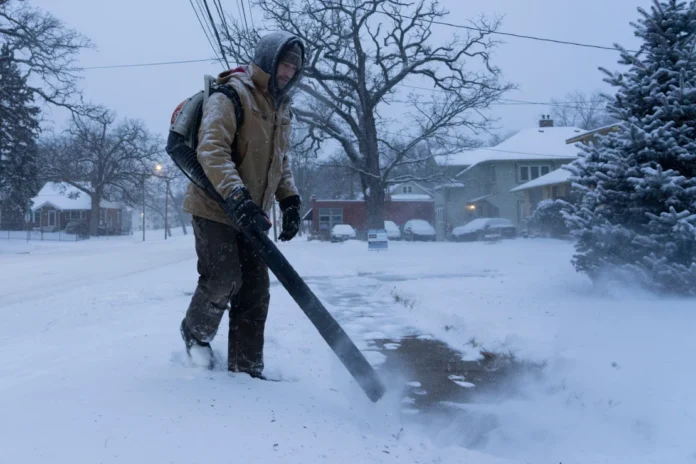A powerful storm is barreling toward Southern California, and officials are on high alert. Evacuation warnings have been issued in parts of Los Angeles County that were hit by devastating wildfires just last month, as heavy rain raises the risk of dangerous mudslides and debris flows.
This storm is the biggest to hit the region in over a year, and it’s just one of three winter systems sweeping across the country this week. Another storm is currently dumping snow across the Midwest, making travel treacherous.
Forecasters say the heaviest rain will arrive Thursday, with some areas expected to see up to six inches, especially in the mountains and near wildfire burn scars. Officials in Los Angeles and Ventura counties are bracing for the worst, particularly in places recently scorched by fires like the Palisades and Eaton blazes. Emergency crews are clearing debris basins, setting up sandbags, and placing concrete barriers to reduce the risk of flooding.
In Orange County, residents near the Airport Fire burn area have been urged to evacuate, and Santa Barbara County has also issued warnings for communities near the Lake Fire. San Bernardino County officials are telling residents in Highland, Wrightwood, and Mt. Baldy to be ready for flooding and mudslides.
Los Angeles Mayor Karen Bass has reassured residents that the city is taking action, deploying more than 7,500 feet of concrete barriers and over 6,500 sandbags to help control debris flows in wildfire-affected areas. Officials are also on standby with search and rescue teams, helicopters, and emergency responders ready to assist if conditions worsen.
But it’s not just burn scar areas that need to worry. Meteorologists warn that even places outside wildfire zones could see urban flooding, strong winds, and dangerous road conditions. The storm will bring heavy downpours from Thursday afternoon into early Friday, with wind gusts strong enough to knock down trees and power lines.
Meanwhile, in the Midwest, winter is making its presence known. A snowstorm moving through the region is causing major travel headaches. Chicago, a city that typically sees much more snow by this time of year, is finally getting a real taste of winter. By Wednesday night, parts of the city had already picked up a few inches of snow, and totals could reach up to six inches. Northern Illinois, near the Wisconsin border, could see even more. Schools in Chicago, Kansas City, and parts of Nebraska have already closed or shifted to remote learning.
The roads have also turned dangerous. In Iowa, authorities responded to over 100 crashes and nearly 300 calls for assistance due to slick conditions. A tragic accident in Missouri took the life of a young child when a vehicle slid off the road and crashed into a tree.
Air travel is a mess as well. By Wednesday evening, more than 1,000 flights had been canceled across the U.S., with over 6,000 experiencing delays. The hardest-hit airports include Chicago, St. Louis, and Washington, D.C.
And winter isn’t done yet. This system is pushing east, bringing a mix of snow and ice to parts of Pennsylvania and New York, with dangerous icy conditions expected to develop in the Appalachians and Ohio Valley. In Virginia, over 150,000 homes and businesses were left without power after the last round of ice storms.
To make matters worse, severe storms are brewing in the South. Heavy rain and thunderstorms have already started in Texas and Louisiana, and they’re only expected to intensify. Mississippi and Alabama are at the highest risk for severe weather, with forecasters warning that some storms could produce tornadoes. The National Weather Service is particularly concerned about nighttime tornadoes, which are much harder to spot and twice as likely to be deadly as daytime twisters. Just last week, a tornado ripped through a Tennessee community after dark, tragically killing two people.
As the storms continue to unfold, officials are urging residents to stay prepared, keep an eye on weather alerts, and take evacuation warnings seriously. Whether it’s rain, snow, or tornadoes, this week’s wild weather is making its presence known across the country.





